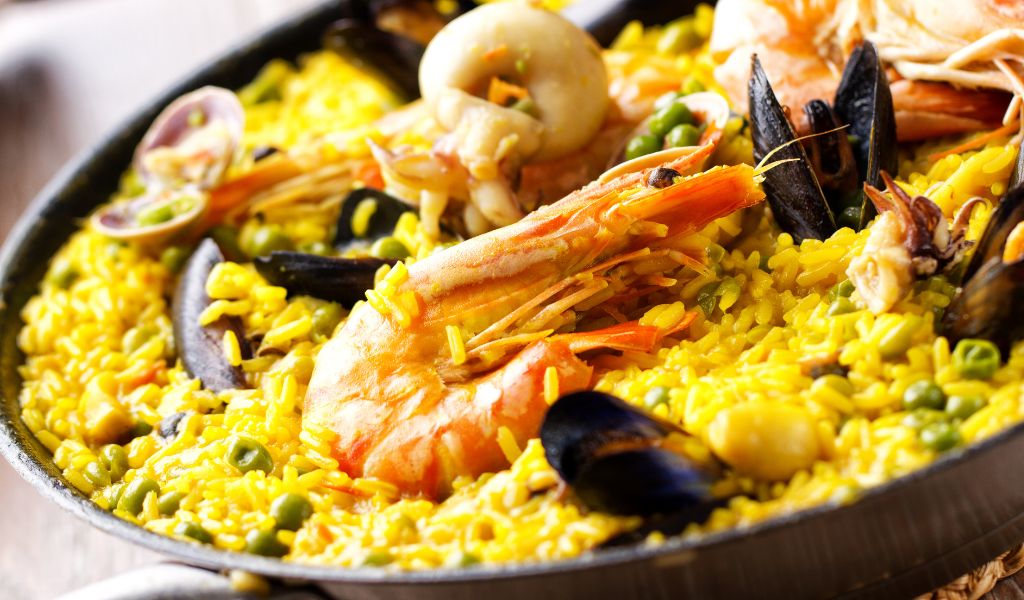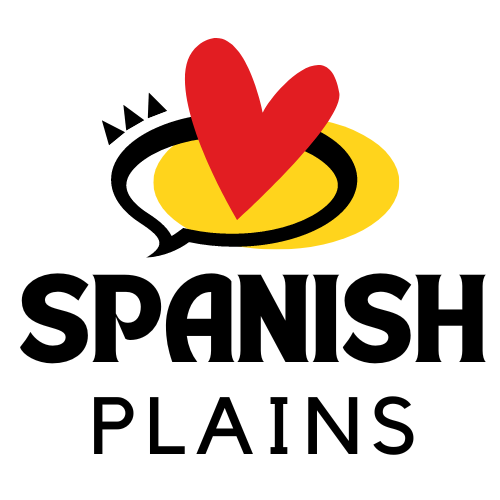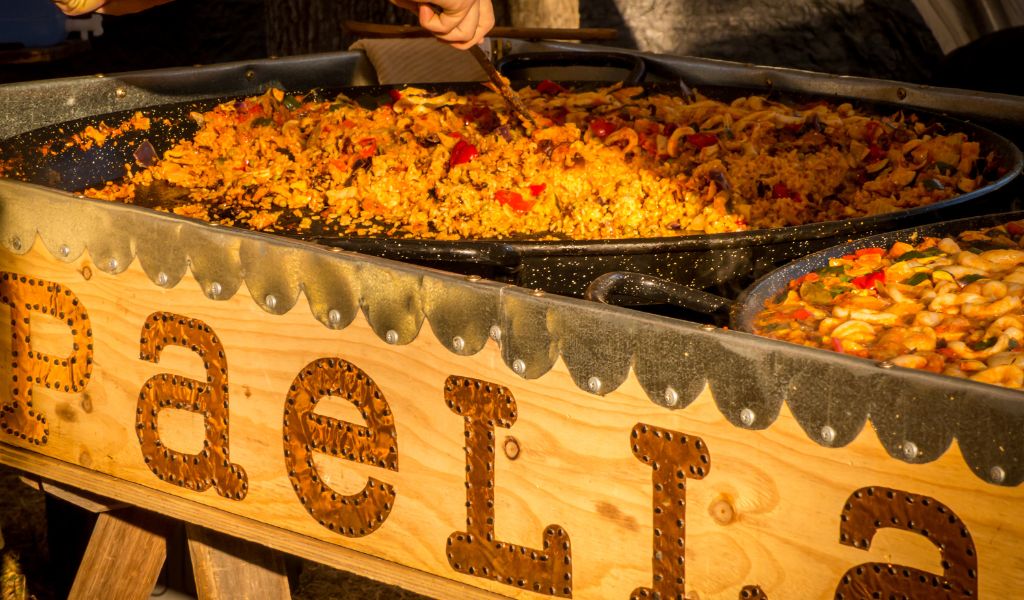Spain’s gastronomy has become world-renowned over the years, and paella is one of the most iconic and popular dishes the country has to offer.
Originating in the Valencia region of Spain, paella is now enjoyed all over the country and even globally.
In this article, we will explore the origins, variations, and where to find the best paella while visiting Spain.
Introduction to Paella
Paella is a rice-based dish that is typically cooked in a wide, shallow pan with a variety of ingredients, such as chicken, rabbit, vegetables, and seafood.
The dish is named after the pan it is cooked in, which is called a “paellera.”
It is a flavorful and colorful dish that is perfect for sharing with friends and family.

History and Origin of Paella
Paella originated in the Valencia region of Spain, where it was traditionally cooked by farmers and farm laborers using ingredients that were readily available to them.
The dish was often cooked outdoors over an open flame, and the ingredients were cooked together in the same pan to create a delicious and hearty meal.
The dish gained popularity in the 19th century when the railway system made it easier to transport rice and other ingredients to Valencia from other parts of Spain.
The dish evolved over time, and different variations of paella were created to suit different tastes and preferences.
The Ingredients of Paella
The key ingredients of paella are rice, saffron, and olive oil.
Other ingredients vary depending on the type of paella being made.
For example, Valencian paella traditionally includes chicken, rabbit, and sometimes snails, while seafood paella includes a variety of seafood such as shrimp, clams, and mussels.
The Different Types of Paella
There are several different types of paella, each with its own unique set of ingredients and flavors. Here are some of the most popular types of paella:
Valencian Paella
Valencian paella is the original and most traditional type of paella. It is made with chicken, rabbit, and sometimes snails, and is flavored with saffron and other spices.
Seafood Paella
Seafood paella is made with a variety of seafood such as shrimp, clams, and mussels. It is often garnished with lemon wedges and parsley.
Mixed Paella
Mixed paella is a combination of Valencian and seafood paella. It is made with both chicken and seafood, and is a popular choice for those who want to try a little bit of everything.
Vegetarian Paella
Vegetarian paella is made with vegetables such as peppers, onions, and artichokes. It is a great option for those who prefer a meat-free diet.
Spanish Cooking for Beginners
Simple and Delicious Recipes for All Occasions
Learn to cook authentic Spanish food without all the fuss
- 30 of the most classic, traditional Spanish dishes
- Simple ingredients, easy-to-follow recipes
- Notes on Spanish culture
How to Cook Paella
Cooking paella can be a complex process, but it is well worth the effort.
Here are the basic steps to cook paella:
Step 1
Preheat the paellera over a medium-high heat.
Step 2
Add the olive oil and wait for it to heat up.
Step 3
Add the meat or seafood and cook until browned. Remove from the pan and set aside.
Step 4
Add the vegetables to the pan and cook until softened.
Step 5
Step 6
Step 7
Step 5
Add the rice and stir to coat with the oil.
Add the broth or water and saffron, and bring to a boil.
Arrange the meat or seafood on top of the rice and reduce the heat to low.
Cover the pan and let the paella cook until the rice is tender and the liquid has been absorbed.
Let the paella rest for a few minutes before serving.
Where to Find the Best Paella in Spain
Paella can be found in many restaurants throughout Spain, but some regions are more known for their paella than others.
Here are some of the best places to find paella in Spain:
Valencia
Valencia is the birthplace of paella and is known for having some of the best paella in Spain.
Some of the most popular restaurants for paella in Valencia include La Pepica, La Riua, and Casa Carmela.
Barcelona
Barcelona is another great place to find paella in Spain.
Some of the best restaurants for paella in Barcelona include Can Solé, 7 Portes, and La Fonda del Port Olimpic.
Madrid
Madrid may not be known for its paella, but there are still some great restaurants that serve the dish.
Some of the best places to find paella in Madrid include Casa de Valencia, Casa Mono, and La Barraca.
Tips for Ordering Paella in Spain
When ordering paella in Spain, there are a few things to keep in mind:
Paella is typically served as a lunchtime dish, so it may not be available at dinner.
Paella is a dish that is meant to be shared, so it’s best to order it with a group.
Paella takes time to cook, so be prepared to wait for your meal.
Be sure to ask about the ingredients in the paella, especially if you have any dietary restrictions.
FAQs
What is the origin of paella?
Paella originated in the Valencia region of Spain.
What are the key ingredients of paella?
The key ingredients of paella are rice, saffron, and olive oil.
What are the different types of paella?
Some of the most popular types of paella include Valencian paella, seafood paella, mixed paella, and vegetarian paella.
Where can I find the best paella in Spain?
Some of the best places to find paella in Spain include Valencia, Barcelona, and Madrid.
How should I order paella in Spain?
Paella is typically served as a lunchtime dish, meant to be shared, and takes time to cook, so be prepared to wait. Be sure to ask about the ingredients if you have any dietary restrictions.
Conclusion and final thoughts
Paella is a delicious and iconic dish that is a must-try when visiting Spain.
With its rich history and diverse variations, there is a paella for everyone.
Whether you’re in Valencia, Barcelona, or Madrid, be sure to sample some of the best paella Spain has to offer.


